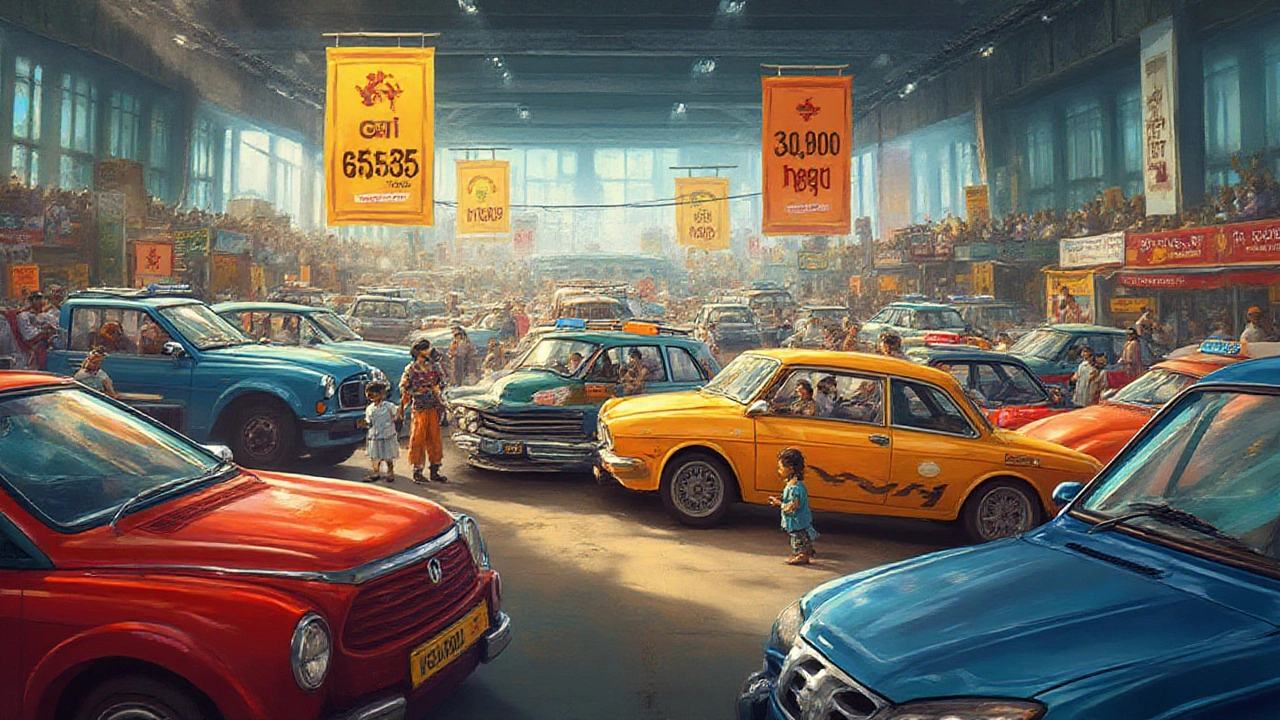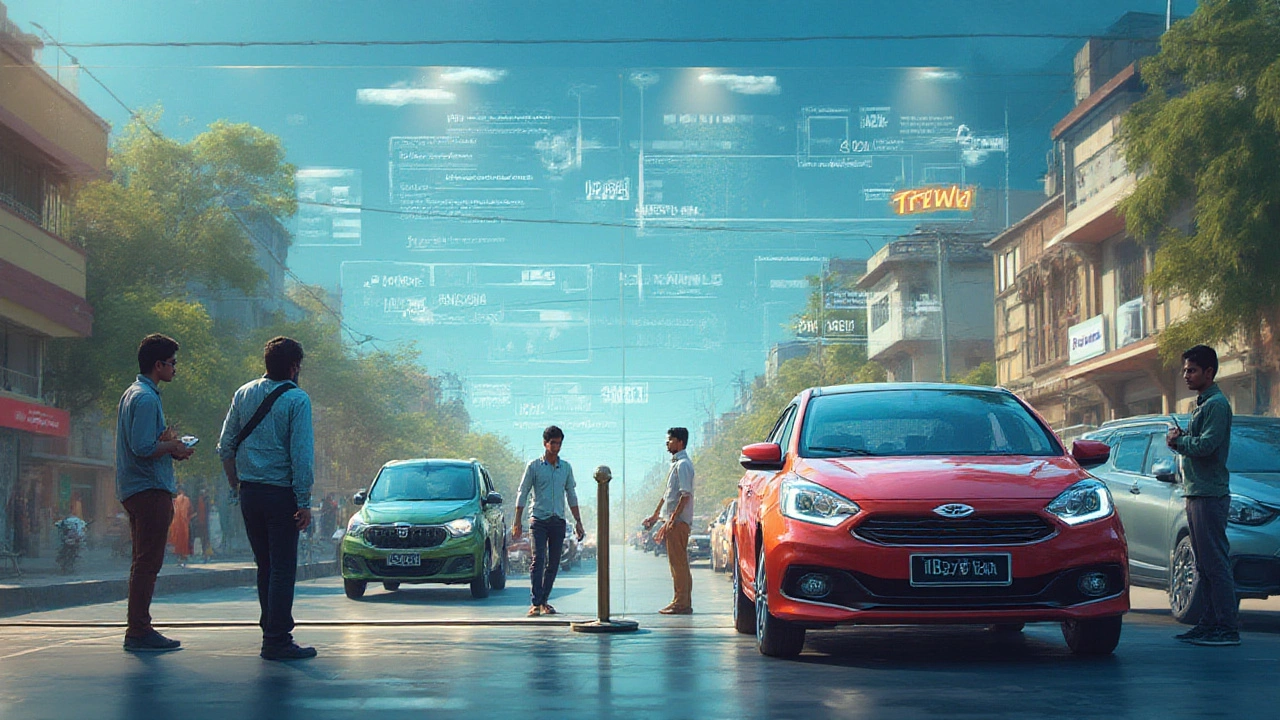Why Are Indian Cars Expensive? Uncovering the Reasons Behind High Car Prices

Try shopping for a car in India, and you could get serious sticker shock. Prices for the exact same model can be way higher in India than in Europe, the US, or even Southeast Asia. We're not talking about imports or luxury brands either—this covers hatchbacks, sedans, and SUVs built in India for Indian buyers. Still think it’s just because of 'imported parts' or 'luxurious features'? There's a lot more under the hood.
The Tax Web and Government Policies
Taxes are the biggest thorns in an Indian car buyer’s foot. Imagine this: the final price tag of an Indian car you see in a dealership might have up to 40-50% of that price representing various taxes. The main culprit? GST, which stands for Goods and Services Tax. For entry-level cars, GST can hit 28%. SUVs get slapped with 22% extra cess, meaning nearly half the price you pay is just to satisfy the taxman. Not convinced this is a big deal? Let’s look at some numbers.
| Car Type | GST Rate | Cess | Total Tax (Max) |
|---|---|---|---|
| Small car (<4m, <1200cc) | 28% | 1% | 29% |
| Mid-size (4m+, 1200-1500cc) | 28% | 17% | 45% |
| SUV (>4m, >1500cc) | 28% | 22% | 50% |
And then there’s road tax, registration charges, state-level fees, and sometimes random 'green tax' add-ons. Variations exist between states, so buying a car in Delhi is very different from buying one in Mumbai, for example. Some states charge a one-time registration fee as a percent of ex-showroom price, while others tack on smaller yearly fees. The end result? You'll never really escape the web of taxes. If you think this is strangling the market, you’re right.
This heavy tax regime makes it impossible for automakers to offer lower sticker prices. Many companies like Suzuki and Hyundai have lobbied hard for reforms, but not much changes. Behind these aggressive taxes are reasons like discouraging car ownership to fight pollution, raising revenue for infrastructure, and balancing global trade. Whether these goals are actually being achieved is still up for debate—but the hit to your wallet is not.
Ever wondered why used cars retain value here? It’s because new cars are so pricey that people just hold onto their vehicles longer, making second-hand prices in India unusually sticky compared to, say, the UK or Japan.

Manufacturing Realities: Costs, Scale, and Supply Chain Struggles
Tired of blaming the taxman? The next stop is the factory floor. People assume Indian labor is cheap, so why aren’t cars? Well, labor ends up being just one slice in the cost pie. Modern car manufacturing relies on robotic assembly lines, sophisticated logistics, pricey equipment, and big investments in R&D. India’s auto sector, even though it looks massive, doesn’t see the same scale as China or the US. For example, a Toyota plant in Japan can pump out far more units with leaner operations than a comparable Indian plant. Less scale means higher per-unit costs for Indian-built cars.
The supply chain also trips things up. Even though Indian manufacturing has improved a ton in the last decade, many parts are still imported or require special materials from abroad. Remember the chip shortage during COVID? It hit India just as hard as anywhere else. Car prices spiked as companies struggled to assemble finished vehicles. Costs aren’t helped by the fact that many suppliers operate on slim margins or have limited reach, forcing automakers to pay extra for secure, just-in-time deliveries.
What about localization? Carmakers like Tata and Mahindra are working overtime to build more in India, source more Indian parts, and design cars specific to Indian roads. But while localization can cut costs, it’s not a fast fix. Investments in new tooling, safety compliance, and emissions tech drive up expenses, which then get shuffled into the retail price. Strict Indian safety and emission laws (BS6 standards, for instance) pile on costs for new tech and ongoing updates, keeping car prices higher than most people expect.
Strangely enough, even India’s famed engineering prowess sometimes works against consumers. Vehicles must be 'India-proof'—meaning they need to handle hot weather, terrible pothole-ridden rural roads, and wildly different fuel quality. This often requires stronger builds or adaptive engineering, both of which cost more money up front. Weak after-sales networks in remote areas mean companies must spend extra on spares, training, and logistics—again, squeezing margins.
What about electric vehicles? They might save fuel money, but their production relies on expensive imported batteries and rare earth metals. This pushes EV costs even higher, even after current subsidy schemes. Most of these factors create a perfect storm: decent labor rates, but complex production, costly compliance, and supply chain headaches. It's brutal for sticker prices.

The Market: Buyer Behavior, Competition, and Brand Games
Indian buyers are famously price-sensitive, but car companies know this and try to pack in as much as possible at every price level. Yet everyone wants a 'premium' experience—bigger screens, techy dashboards, safety features—and these upgrades come with real costs. While base models may exist, most buyers go for the higher trim levels. Companies bundle desirable features in mid- and top-range variants, subtly nudging buyers towards pricier options. Add-ons like sunroofs, connected car tech, leather seats—every new launch has more, and the price inches up each year.
Competition, instead of reducing prices as you’d hope, often fuels this spiral. See a rival launch a feature-filled Tata Nexon with a big screen? Suddenly Hyundai and Maruti rush to one-up them. The Indian car market may seem crowded, but real competition is between a handful of major players—Maruti Suzuki, Hyundai, Tata, Mahindra, and a few others have over 80% market share. Newcomers, like Citroen or MG, have to price high to recover investments and establish themselves. And luxury brands? Well, you can forget deals there—they face even steeper import duties, tighter quotas, and are often subject to extra registration and insurance fees.
Banks don’t help much either. Car loans make monthly costs look manageable, but high interest rates mean buyers spend more in the long run. Cash discounts or trade-in offers are rare except during festive months, and even then, the 'discounted' prices are often on paper—dealerships nudge buyers what to take.
Let’s run through an example for context. In 2024, the Maruti Suzuki Swift started at around Rs. 6 lakh (ex-showroom). By the time you factored in GST (28%), road tax in Maharashtra (11%), insurance, and registration, the on-road price crossed Rs. 7.7 lakh. Opt for a higher trim and throw in a sunroof, you’re looking at Rs. 10 lakh. Same car sold in South Africa, including all taxes, came to roughly Rs. 8.5 lakh equivalent. Go figure.
There’s also a bit of a psychology game. Premium pricing triggers the idea of 'status'—car ads show stylish professionals, families on vacation—selling the dream. When a customer is already mentally set on upgrading, the higher price doesn't seem so outrageous anymore, provided the EMI (monthly installment) stays in range.
Want a tip? If you’re shopping for a car, dig deeper than the sticker price. Ask for total on-road price, breakdowns for insurance and add-ons, and get quotes from dealers in multiple states if possible—even neighboring states may have lower registration costs. Look out for upcoming tax changes or new launches that could trigger markdowns on previous models. If you can, buy right before the close of the financial year or during Diwali season—dealers sometimes clear inventory at real discounts then.
To sum up: Indian cars come expensive because of a tight knot of taxes, tough manufacturing demands, expensive compliance, cautious competition, and the relentless desire—for both makers and buyers—to get a bit more 'premium' with every purchase. Until there’s a seismic shift in policy or manufacturing, don’t expect any quick relief. But at least now you’ll know where your rupees are really going when you sign on the dotted line for your next set of wheels.